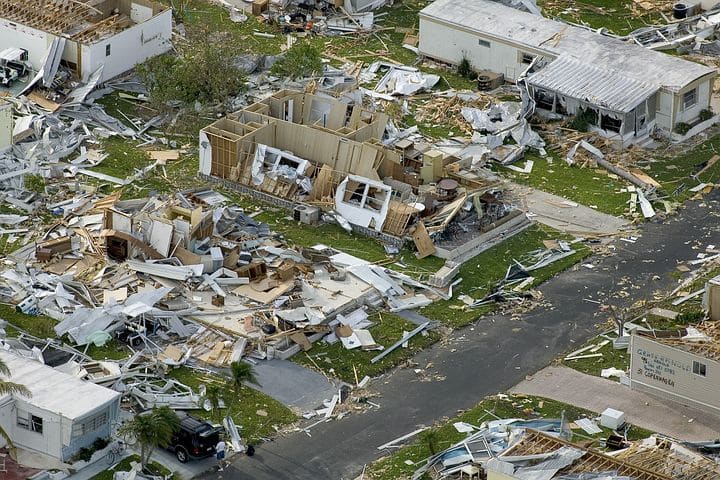- February 25, 2020
- Posted by: Felix Gomez
- Category: News

Over the past years and decades, so many geographical areas in the United States have proven to be very prone and susceptible to various natural disasters such as earthquakes, floods, hurricanes, mudslides, tornadoes, wildfires and so on; thereby leaving homeowners with the grieving burden of loss of lives, properties and other valuable personal belongings. Reports and statistics have shown that between 1980 and 2018, the United States have recorded around 250 natural weather and climate disasters costing over $1 billion, with a total cost of about $2 trillion. This is the main reason why every homeowner in the United States needs to ensure that they and their properties are very well protected and insured.
Sadly, a lot of homeowners do not prioritize this and therefore do not have adequate coverage to assist them after a serious natural disaster. Even most of the ones who do, do not know how to get the best out of their homeowners coverage, as most insurance companies usually resort to denial or delay of claims after major disasters due to the high number of claims during that period.
No one hopes for natural disasters to occur, but it is always best to start preparing for these scenarios by doing the right things toyour policy coverage. These tips could really help in guiding you on what to do before, during and after natural disasters on your home.
WHAT YOU NEED TO DO BEFORE THE DISASTER
First of all, you need to be properly protected by having a full homeowner’s or other relevant insurance policy coverage before the disaster strikes before going ahead with these tips;
• Read and understand your policy: Most people are fond of getting coverage without even trying to know the full details of what is covered and what’s not. It is very important for you get an expert to explain your policy to you and help you understand how your policy works, how to make a claim, along with other necessary information you should know about.
• Review your policy for disaster coverage: Most homeowner insurance policies usually do not cover natural disasters such as earthquakes and floods, while some have a special separate coverage for these disasters. It is your duty as the homeowner to ensure you check for the disasters which you are at the highest risk of encountering, andmaking sure you have enough protection. If your policydoesn’t cover the high risk disasters, you may need an addition type of insurance policy such as earthquake or flood insurance.
• Improve your home to withstand disasters: You should always do your best to reduce the risk of your home getting destroyed during disasters by keeping it and the surrounding property in good shape through repairs and proper maintenance. Your insurance company can decide to deny your claim citing poor home and property maintenance and irresponsibility.
• Insure for full replacement value: Make sure your insurance pays at least the full replacement value of your home and belongings and not its actual cash value.
WHAT TO DO DURING AND AFTER NATURAL DISASTERS
Here are some important steps and tips to follow during and after a disaster hits your home;
• Safety of lives should come first: The first thing to look for during a disaster outbreak is the lives of everyone in your home. Make sure everyone evacuates the scene quickly and safely before indulging in any other measures to protect your home.
• Reach out to your insurer: After everyone is safe and sound, you can now contact your insurance company to let them know about what just transpired.
• Try and gather pictures and videos of your home and belongings: Homeowners are always advised to take pictures or videos of their homes regularly in order to make an inventory of your home easily and readily available. If you don’t have these, you can also reach out to family and friends as they may have some as well. An inventory of your properties helps in making your claim stronger.
If you are prepared properly prior to the disaster, getting the best out of your insurance coverage becomes easier. Here are some tips to guide you on what to do after the disaster;
• Take pictures of the damage: Insurance companies always request pictures and videos from the disaster. Therefore you should endeavor to take multiple photos from different angles to help your claim.
• Contact the claims department of your insurance provider: There would probably be a lot of claims being filed after natural disasters, and this could bring about slow response. Therefore you should be quick to file your own claim directly to the claims department.
• Get a copy of your policy: If the original copy of your policy was destroyed during the disaster, you can get your insurance provider or agent to send another copy, so you know your rights and coverage.
• Get an agreement from your insurance provider before starting repairs: Ensure the costs of repairs are well quoted and agreed upon by your insurer before repairs can commence.
• Do not dispose of anything until the adjuster comes: Your insurance provider would send an adjuster to have a look at and estimate the damage; do not throw away anything from the damaged scene, as everything need to be seen by the adjuster.
In conclusion, you can rest assured that following these steps the right way will get you maximum benefits from your homeowner’s and other types of insurance policy coverage.
